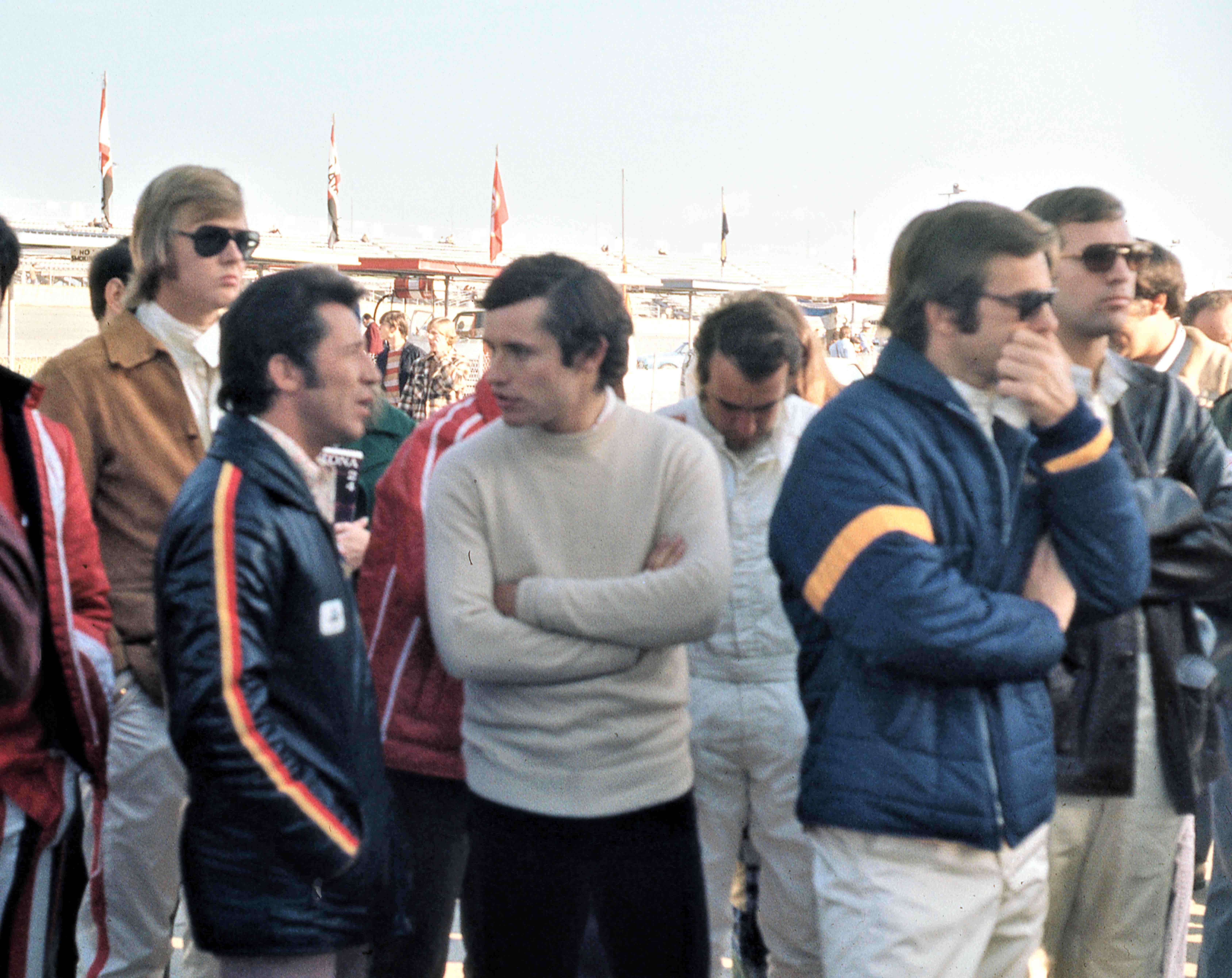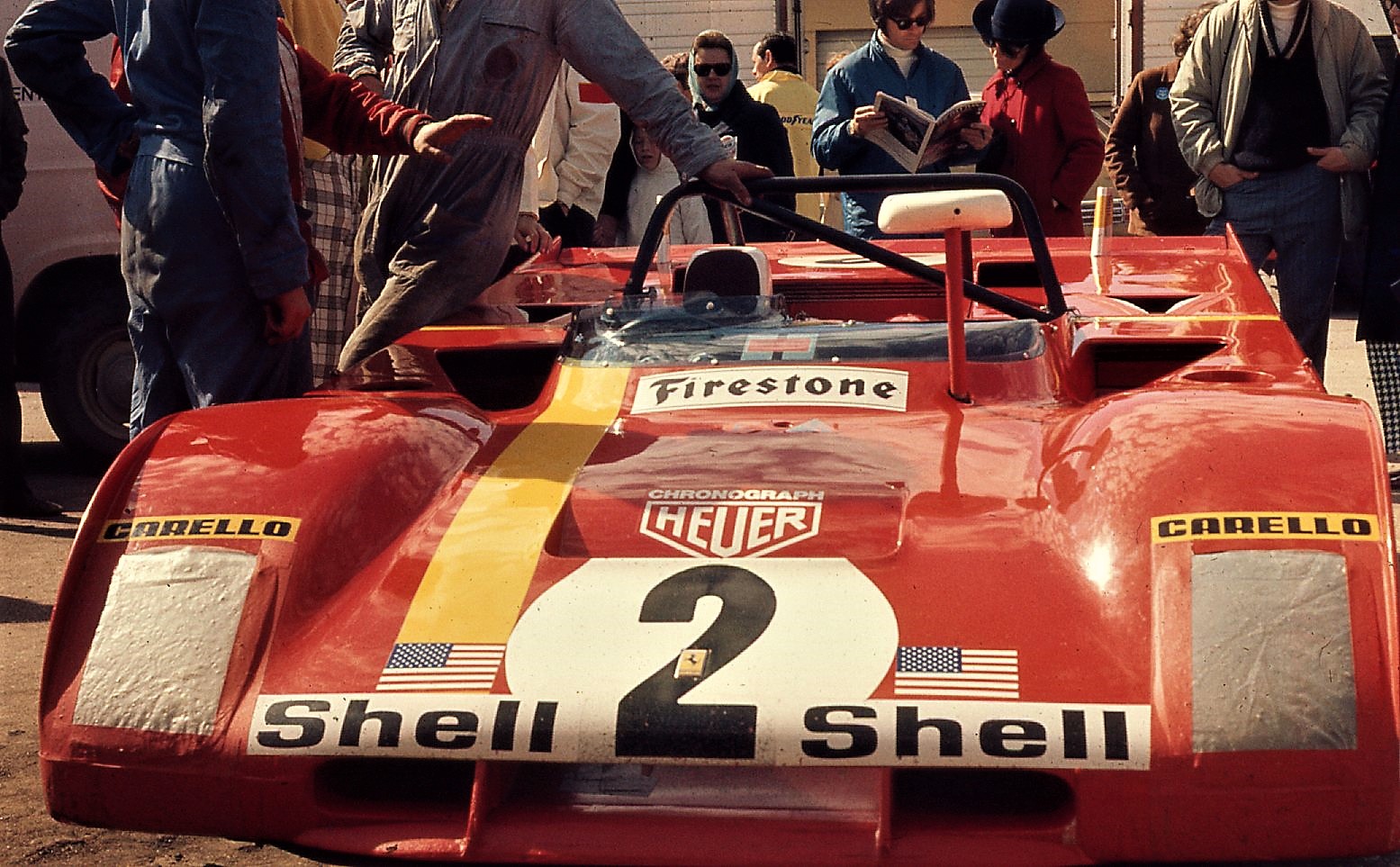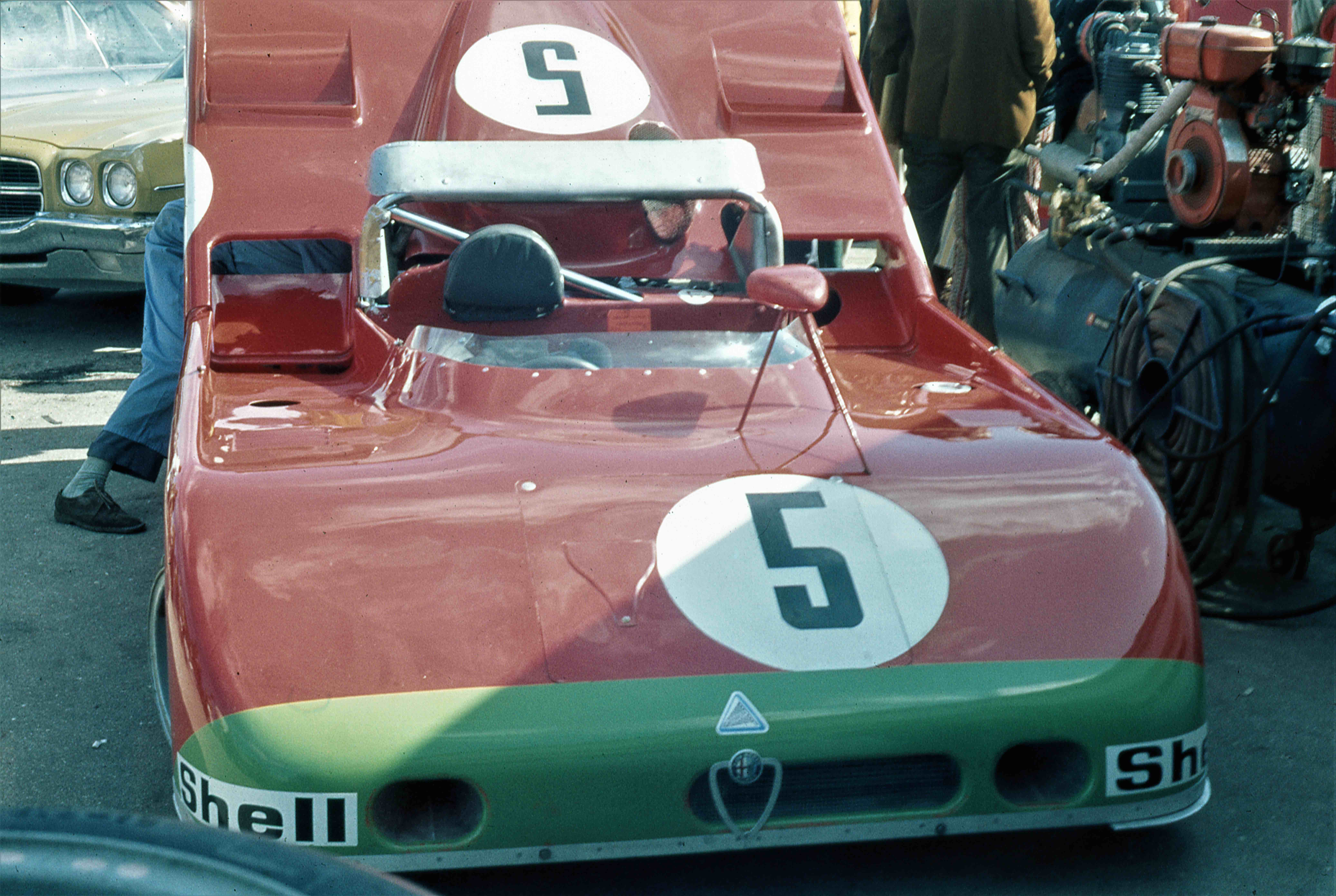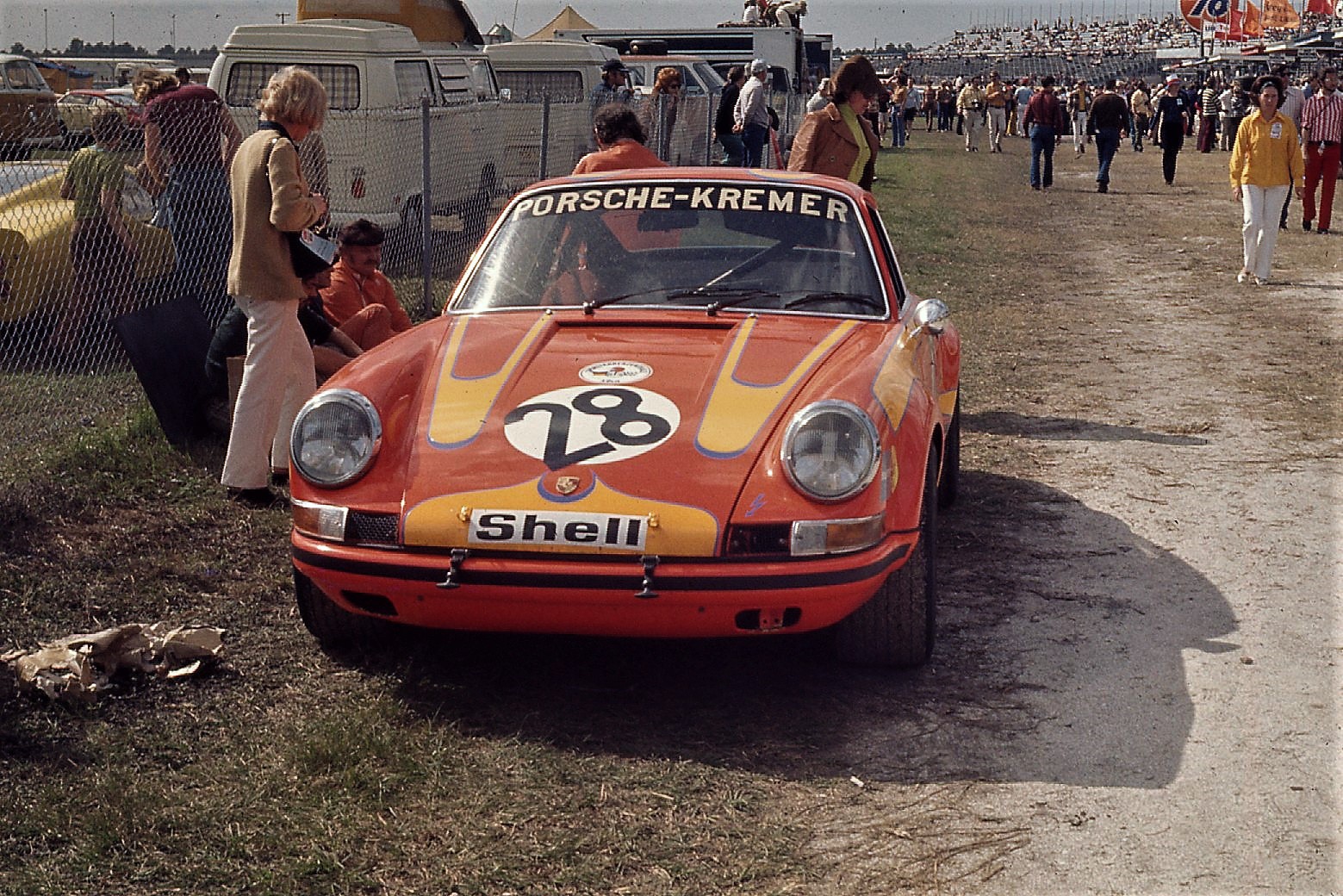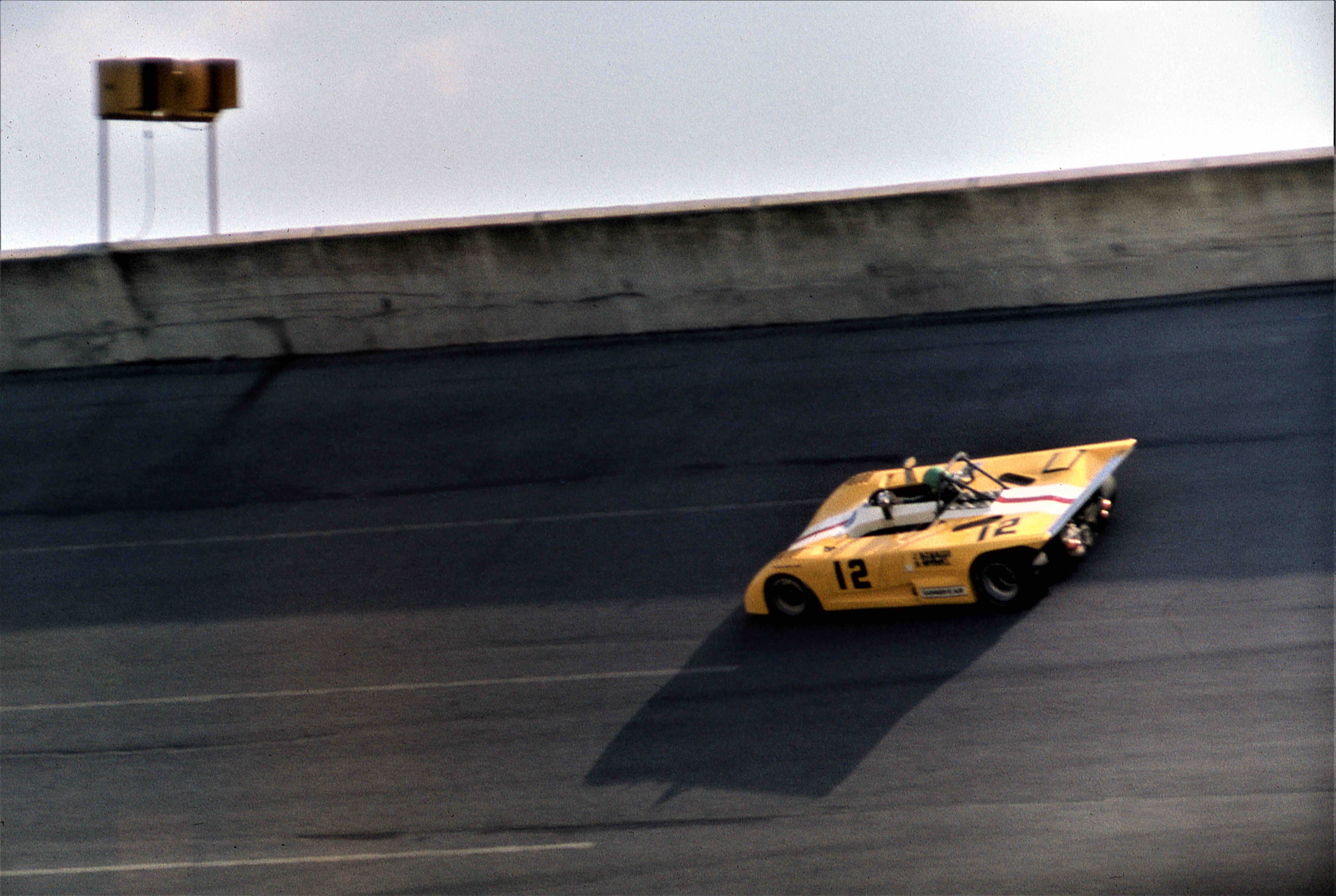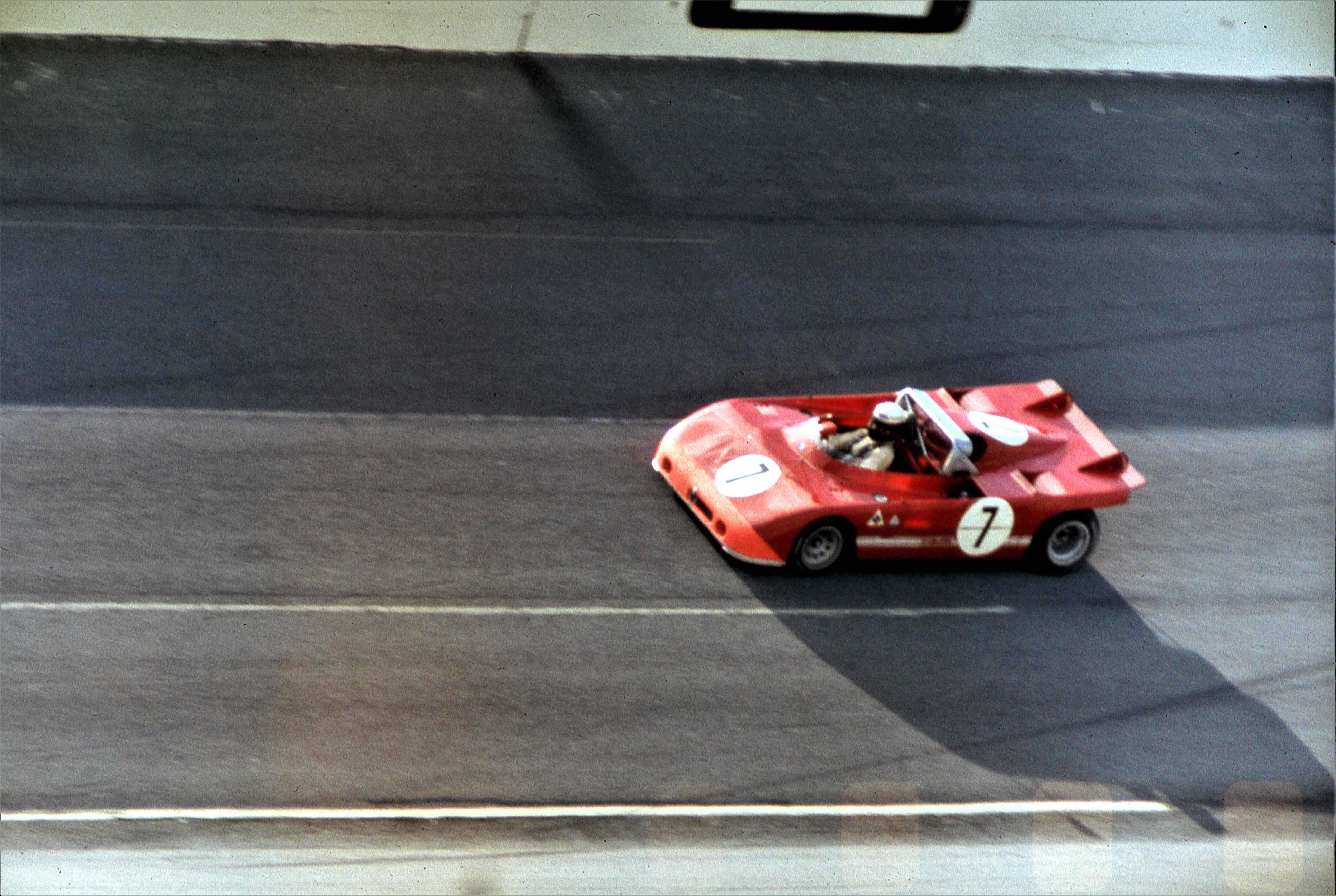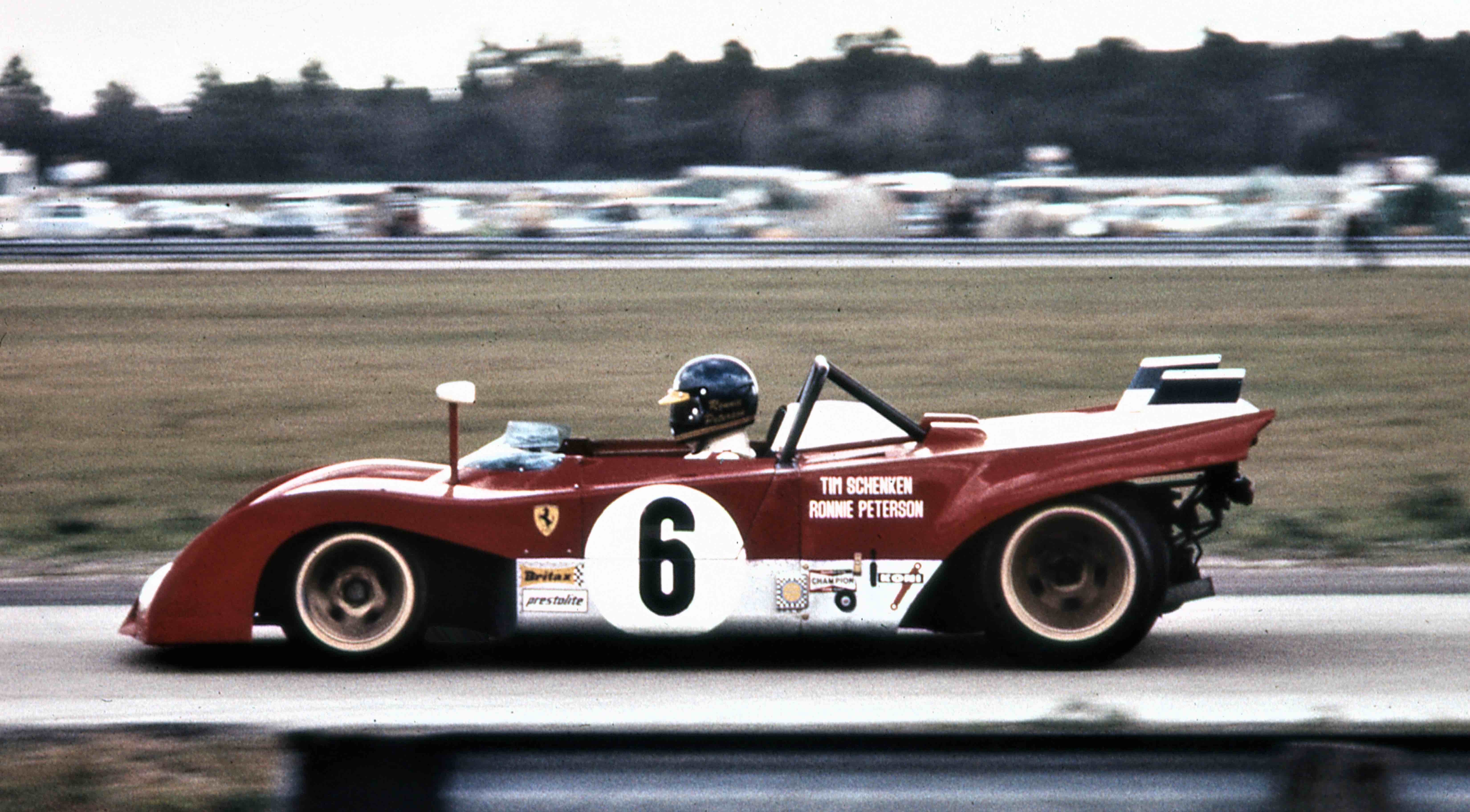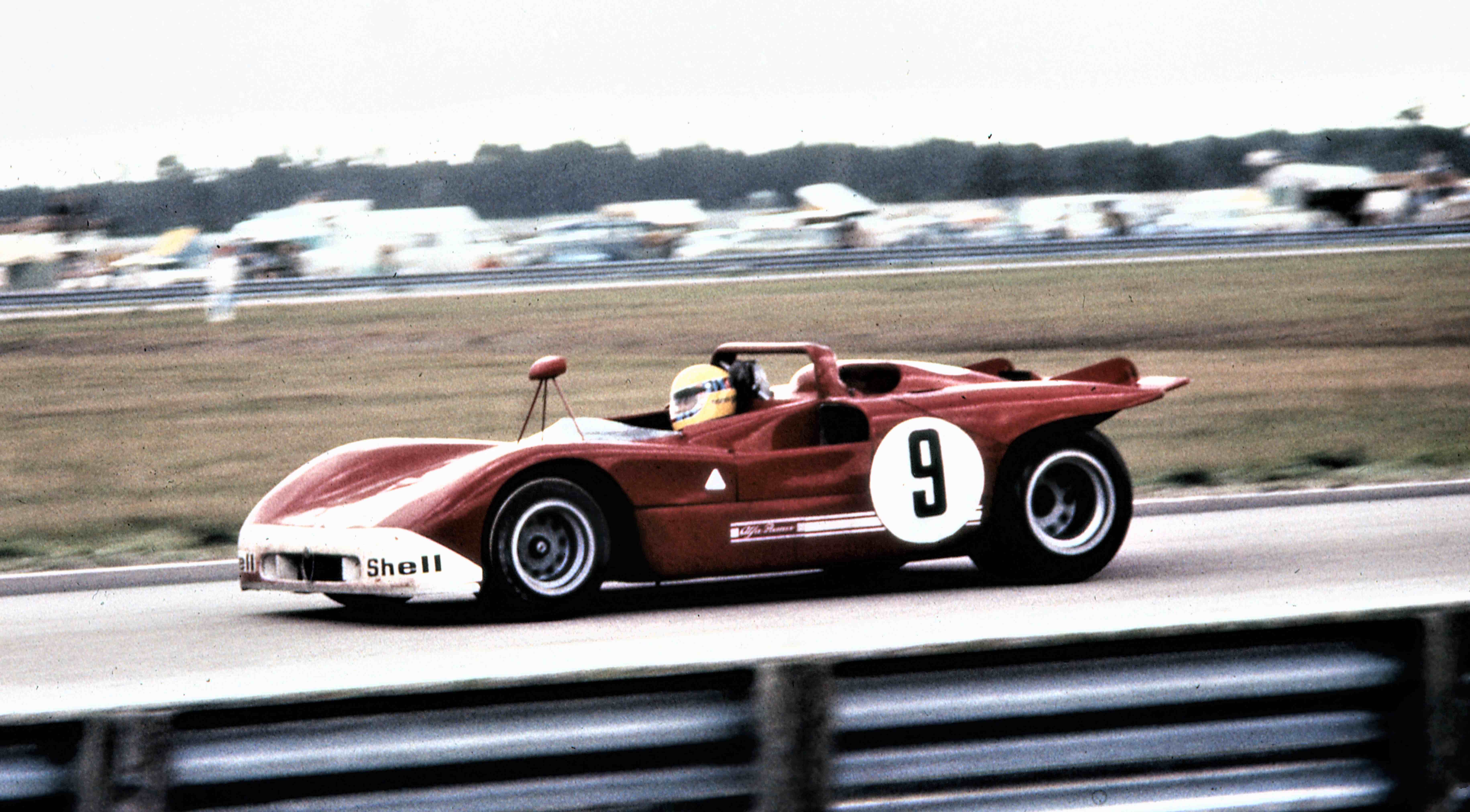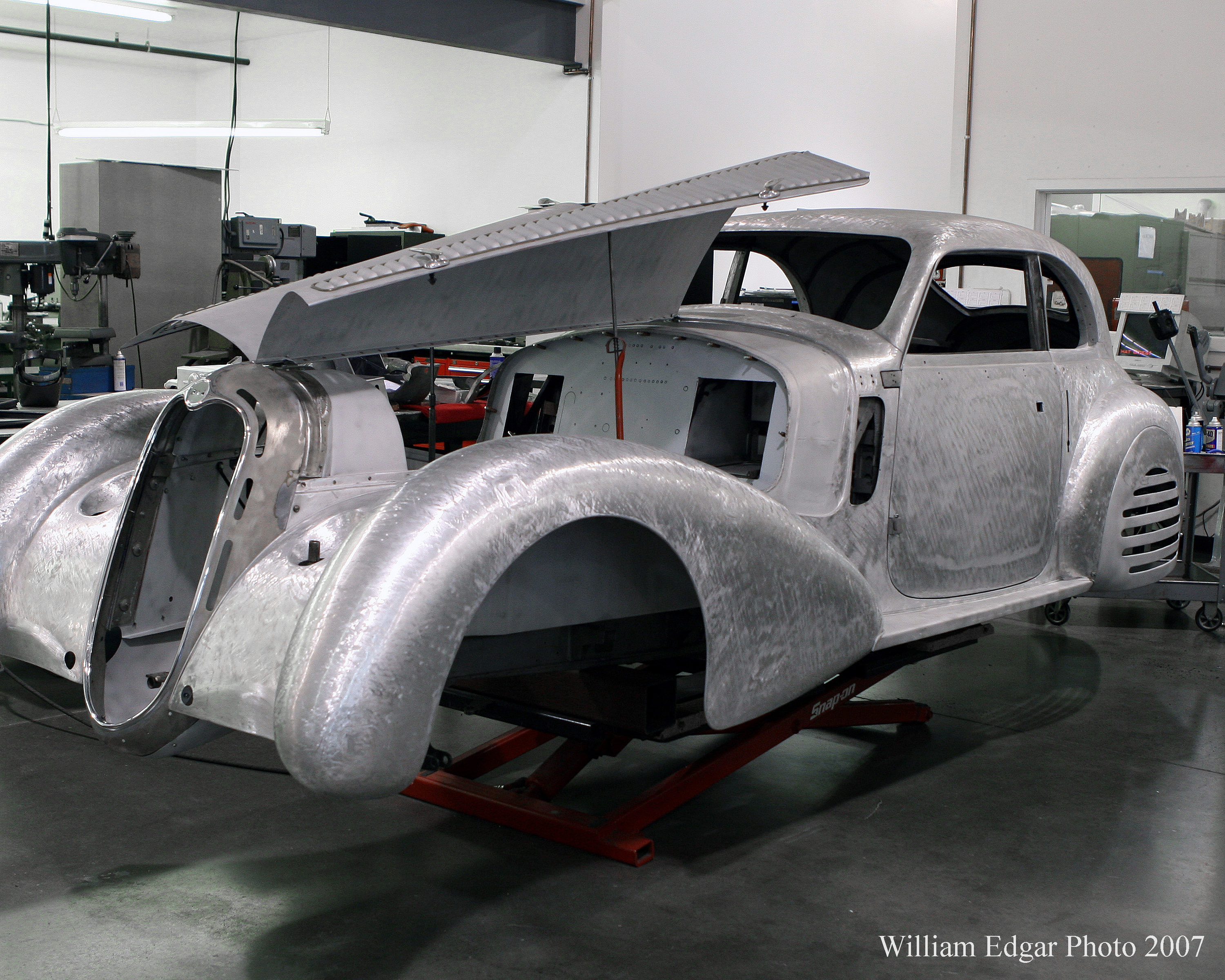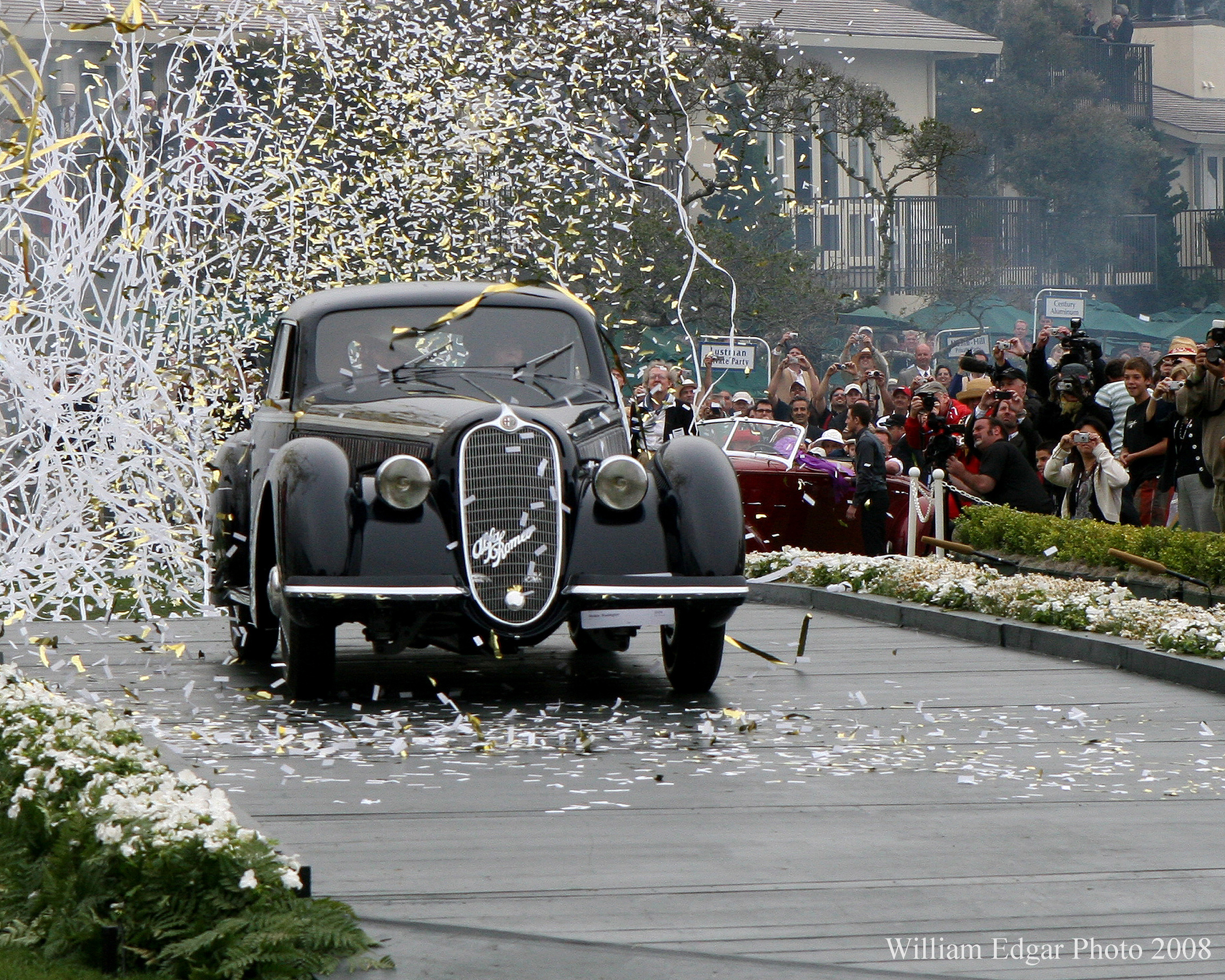The famed Daytona International Speedway was built in the late 1950s as a state of the art facility – the crown jewel of the NASCAR stock car season. But the track had been designed from the beginning to include a road course layout and “Big Bill” France, Sr. aspirations beyond just stock cars. In June of 1961, he attended the 24 Hours of LeMans and was stunned by the sight of more than 250,000 spectators. Upon returning home, he hatched an idea to bring global credibility and prestige to his new Daytona facility. Partnering with the SCCA, he started the Daytona Continental sports car race in 1962. Originally run as a three-hour event that year and the next, it was expanded to 2,000 kilometers in 1964 and 1965. By 1966 it had expanded yet again to a full 24-hour length to match the Le Mans 24 hours race. The first 24 Hours of Daytona was won by Ken Miles and Lloyd Ruby in a Shelby Ford GT40 MK II. The Daytona 24 then became a fixture on the World SportsCar Championship schedule. Ferrari had their famous 1-2-3 finish in 1967, followed by Porsche with their own 1-2-3 finish in 1968. The 1970 and 1971 races were highlighted by great battles between the Porsche 917 and the Ferrari 512, both races being won by the Gulf Porsche 917.
The driver’s meeting just before the1972 Daytona race, which was shortened to six hours by the FIA over concerns that none of the 3.0-liter prototypes would survive a full 24 hours. From the left: Ronnie Peterson, Mario Andretti, Jacky Ickx, Clay Regazzoni, and Peter Revson (in the blue jacket). Photo: Martin Raffauf
For 1972 the FIA had changed the rules dramatically. The Sports Car World Championship was now limited to 3.0-liter cars, effectively banning cars with 5.0-liter displacements. With some foresight, Ferrari had been working on and racing their 312P car during 1971, gaining experience for 1972. The Ferrari 312P was powered by a derivative of the then-current 12-cylinder Formula 1 engine. Alfa Romeo also had a 3.0-liter car, powered by a V8. Porsche, as a factory, withdrew from the series, as they only had the aging 908, with a 3.0-liter flat 8- cylinder engine. The FIA also raised the minimum weight for the class which handicapped the lightweight 908, as it was underpowered in comparison to the Ferrari and Alfa Romeo. Porsche racing was left in the hands of privateers. Due to reliability concerns, the FIA mandated 6-hour maximum races in 1972, except for Le Mans. Sebring fought this and kept their 12-hour race, however, Daytona agreed to the 6-hour limit. Daytona did schedule several support races over the 24- hour time period, to make it seem like it was 24 hours of racing. But the World Championship race would run on Sunday for six hours only.
The winning Ferrari 312PB of Jacky Ickx and Mario Andretti sits in the paddock before the race. Photo: Martin Raffauf
The Alfa Romeo T33 of Vic Elford and Helmut Marko in the garage area. It would finish third. Photo: Martin Raffauf
The Kremer Porsche 911S was one of many GT cars that filled out the field in 1972. The car was a DNF. Photo: Martin Raffauf.
Both Ferrari and Alfa Romeo entered three cars each. The Ferrari’s were the new 312PB (a further evolutionary development of the car run in 1971) and were driven by Mario Andretti/ Jacky Ickx; Ronnie Peterson/Tim Schenken; and Clay Regazzoni/Brian Redman. The main competition would come from the Alfa Romeo TT33/3’s of Peter Revson/ Rolf Stommelen; Vic Elford/ Helmut Marko; and Andrea de Adamich/ Nani Galli. There was also a quick Lola T280 entered by Jo Bonnier and co-driven by Reine Wisell. A full field of GT cars and a few older prototypes and 2.0-liter sports cars filled out the grid.
Reine Wisell in Jo Bonnier’s Lola 280-Ford ran well until an accident. Photo: Martin Raffauf
Mario Andretti qualified on the pole and took an immediate lead. However, in the early going the car lost a cylinder with no spark. There was some kind of wiring or electrical problem that could not be fixed quickly. They just carried on. Mario reckoned they lost 800-900 RPM, so just drove harder. Their team-mates, Regazzoni and Redman took the lead and were in front until a tire blew in the banking just in front of Reine Wisell who was running second in the Lola. Both cars were damaged in the incident and needed extended pit work to continue. The Alfa Romeo of Revson and Stommelen then took over the battle for the lead with the slowed Ferrari of Andretti/Ickx, leading several times until the Alfa engine failed about halfway thru the race.
Peter Revson in the Alfa Romeo on the East banking during the 1972 Daytona six-hour race. The pair of Revson/Stommelen would blow the engine halfway through the event. Photo: Martin Raffauf
The Andretti/Ickx car led the rest of the way, winning on just 11 cylinders over their teammates, Ronnie Peterson and Tim Schenken (who had a clutch problem the whole race). Vic Elford and Helmut Marko ended up third in their Alfa, four laps behind. The Regazzoni/ Redman Ferrari was fourth after earlier repairs from the tire failure cost them 15 laps. Of the 72 cars entered, 58 qualified but only 21 were classified finishers. So, it seemed apparent the FIA was correct with their reliability concerns.
In a foreshadowing of things to come, Peter Gregg and Hurley Haywood finished 7th overall and first in class with a 2.5-liter Porsche 911S. They would return with some success in subsequent years!
In 1973, the race returned to its normal 24-hour length and has remained as such ever since, with the exception of 1974 when the race was canceled in the middle of the fuel crisis. In 1975, IMSA took over the sanctioning of the event and it remained on the World Championship calendar until the early 1980s. At that point a large rule divergence between the FIA (Group C) and IMSA (GTP) caused the race to fall off the international calendar.
If the idea of a blog post is to pass along personal history having subject matter that might appeal to others, then here goes.
For me, autumn of 1948 was a pivotal time. I was fifteen and already riding an Ed Iskenderian-tuned 500cc Triumph Tiger, getting about on it, nicely enough, quickly enough, but my father decided I should step up and learn to handle a four-wheeler. The car of choice, his daily driver 1938 Type 57C Bugatti, offered me the first real steering wheel to grasp while comprehending the left-handed shift pattern of that straight-8 drophead French classic. Perceived as totally unearthly, the affair launched my sensibilities into what the outrageous world of cars truly was and, by the second day of October, I was all set to savor the outcome of America’s first post-WWII grand prix race run in anger over a 6.6-mile road course skirting, and slicing through, the hamlet of Watkins Glen, New York. The impression formed was permanent.
Invited 64 years later to speak on sports car racing in America at the Glen’s International Motor Racing Research Center, brought me to meet IMRRC’s president, J.C. Argetsinger, son of Cameron and Jean Argetsinger, founders of the first Watkins Glen Grand Prix and, later, the IMRRC facility. We talked about how it all began.
“Cameron Argetsinger,” J.C. said of his father, “was fascinated with the Roosevelt Speedway before the war when Mercedes and Auto Union came over, and after the war he bought an MG TC and joined the new Sports Car Club of America.” The story goes—during the SCCA members’ dinner at Indianapolis the night before the 1948 “500”, Cameron, a willing enthusiast from New York State, daringly announced he was “going to have a road race next fall” and invited everyone to join his entry list. The nerve of that young visionary! But they did join; not all, yet there were enough drivers and cars signed on to fill that historic grid for Watkins Glen’s inaugural Grand Prix on October 2, 1948.
“I sold programs that first year at age six,” Cameron’s son J.C., now 78, said. “There were ten or fifteen thousand spectators, and our city fathers liked the idea. Next year there were fifty thousand. By 1950 it was colossal.” Watkins Glen’s racing and the later research center grew hand in hand.
The IMRRC’s archives, after years of database streamlining and simplifying, is expediently searchable—punch in a name or date, place or car, it brings up anything out of a collection, and it’s right there. “We’re not a museum, per se,” informed an IMRRC archivist, even though renowned race cars are often displayed there, “and I think that’s important for people to know. It’s about the history of motor racing worldwide. It’s not just about Watkins Glen.”
Bygone beginnings are fascinating for anyone who fancies automotive history, as do I, especially American motor-racing’s golden era. Take, for example, the Italian gem bodied by Carrozzeria Touring that won that very first Watkins Glen race—an Alfa Romeo 8C2900B Berlinetta then owned and driven by Cameron Argetsinger’s colleague, Frank Griswold. Like my father’s Bugatti, Griswold’s Alfa was a straight-8, also built in 1938. Throughout high school, I penciled pictures of the swoopy 8C during study hall. I made it my dream car, even more so than the Bug. Sure, I could hop in and drive our Bugatti, but that Alfa—it was unobtainable! You might even say it only existed for me through shapes clouds made in the sky. And then.
Eleven years ago, on a chilly, damp November day while photographing and writing article notes about a Washington State vintage car shop called Dennison International, proprietor Butch Dennison led me to a bay where they were frame-up restoring a car to have ready for Pebble Beach’s Concours d’Elegance. And there it was!—the exact same Alfa Berlinetta that had won the Glen’s initial race and that had been stuck in my mind for all the decades since!
“Butch,” I gasped, “come August this car is going to win Best of Show!” He laughed, smiled, shaking his head in that fashion of possessing desire but not audacity to be certain. “You’ll see,” I said.
On August 17, 2008, the superbly restored Alfa Romeo 8C2900B was called forward to the Pebble Beach awards ramp where its owners, Jon and Mary Shirley, received the Concours d’Elegance’s Best of Show distinction—the Alfa’s second major historic win of its 70-year car life. I was there and was camera-ready. From a storm of swirling yellow and white confetti appeared the perfect story.
The conservancy of significant cars and keeping of their valued histories are both pursuits and obligations. But more than that, they are what we enjoy doing—and are the spirit of what I have seen grow from 1948 to today as the International Motor Racing Research Center at Watkins Glen, New York.
These narratives to be born from the IMRRC are for everyone caring about what we love.—William Edgar

